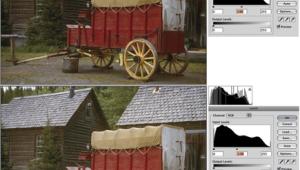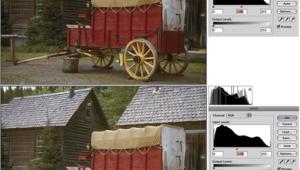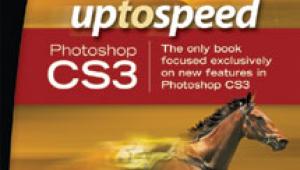Digital Gear; Lens Filters; Do They Have A Place In Digital Photography? Page 2
Screw-In Or Modular Filters?
Filters are available in many different shapes, sizes, and materials and their use can affect contrast, sharpness, highlight flare, color, light intensity, or create an array of special effects. They are available as delicate gelatin filters that drop into special holders or lens hood, threaded glass filters that screw onto the front of your lenses and square or rectangular plastic modular filters that slip into holders than can be attached to different lenses using adapter rings.
If you have a variety of fixed focal length and zoom lenses of different focal lengths you can easily find yourself owning lenses requiring many different filter sizes. Modular filters overcome this obstacle by letting you purchase one filter that fits all your different lenses. These filters fit a standard filter holder and work with various-sized adapter rings, allowing them to fit different lenses and even different format cameras. All you need is a single, inexpensive adapter ring for each of your different lenses’ thread sizes. That means you only need to own one ND, gradient, or polarizer filter and it will fit all of your lenses.
Modular filters are typically square or rectangular, although some companies,
such as Cokin, offer round filters, too.
These filters are also more than likely be made out of plastic. Don’t let that word “plastic” conjure up the optical quality found in toy cameras or even my favorite Holga. Plastic filters are usually constructed from the same kind of optical resin material that’s used in eyeglasses. The sizes of filters and the type of adapters used are different for some modular filter manufacturers, but some filters are compatible with other systems.
 |
|
|
Cokin’s original A filter system uses 75x75mm filters. The larger P (84x84mm) filter system was designed for professional use on medium format cameras, but an A/P adapter lets you use the A filters in a P holder so it’s not necessary to buy P filters if you already own equivalent A versions.
TIP: When using A filters on shorter focal length lenses some vignetting may occur so watch out for this problem on your LCD preview screen. Cokin offers the even larger (6.7x5.1”) X-Pro size that use a holder similar to the A and P series but with more rugged construction. Later, Cokin launched their grande 130mm wide Z-Pro series. A Z/P adapter lets you use Z filters on a P holder and the Z/P wide angle adapter lets you use Z filters on a P wide angle holder.
Filter Factors
Many lens filters absorb light and that light loss must be compensated for when calculating exposure. Fortunately, digital SLR in-camera metering systems compensate for these differences, but the rated “filter factors” are still a good measure of the number of stops that must be compensated for by either automatically or otherwise altering shutter speed, aperture, or ISO setting. Filter factors are multiples of the unfiltered exposure so that a factor of two is equal to a one-stop increase. My preferred method of making photographs when using filters is to change the shutter speed, using a tripod if necessary to maintain the same depth of field for either the filtered or unfiltered exposure.
 |
|
|
 |
|
|
Filter Companies
Many different kinds of filters are produced by camera manufacturers as well as filter companies, including:
HP Marketing Corp.
(Heliopan)
16 Chapin Rd.
Pine Brook, NJ 07058
(800) 735-4373
www.hpmarketingcorp.com
LEE Filters USA
2237 N. Hollywood Way
Burbank, CA 91505
(800) 576-5055
www.leefiltersusa.com
OmegaSatter
(Cokin)
1041 S. Carroll St.
Hampstead, MD 21074
(410) 374-3250
www.cokin.com
Schneider Optics
(B+W)
285 Oser Ave.
Hauppauge, NY 11788
(800) 645-7239
www.schneideroptics.com
Singh-Ray Filters
2721 SE Highway 31
Arcadia, FL 34266
(800) 486-5501
www.singh-ray.com
The Tiffen Company
(Tiffen)
90 Oser Ave.
Hauppauge, NY 11788
(585) 426-1073
www.tiffen.com
THK Photo Products Inc.
(Hoya)
2360 Mira Mar Ave.
Long Beach, CA 90815
(800) 421-1141
www.thkphoto.com
ToCAD America Inc.
(Sunpak)
53 Green Pond Rd.
Rockaway, NJ 07866
(800) 886-2236
www.tocad.com
- Log in or register to post comments

















































